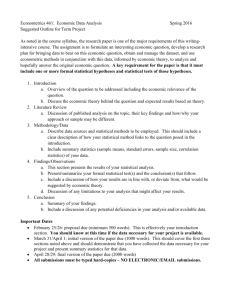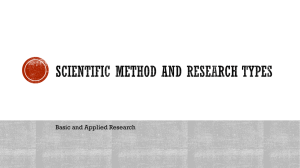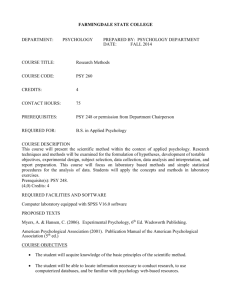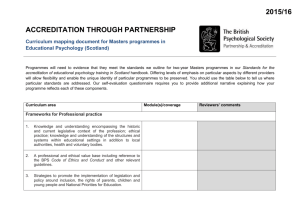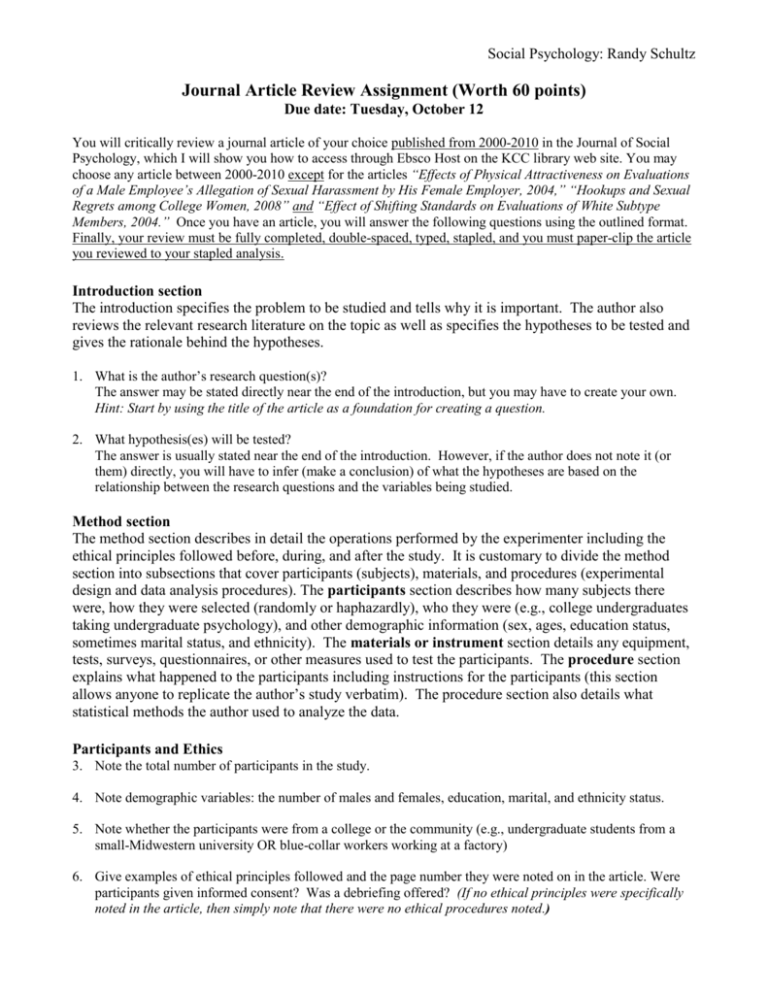
Social Psychology: Randy Schultz
Journal Article Review Assignment (Worth 60 points)
Due date: Tuesday, October 12
You will critically review a journal article of your choice published from 2000-2010 in the Journal of Social
Psychology, which I will show you how to access through Ebsco Host on the KCC library web site. You may
choose any article between 2000-2010 except for the articles “Effects of Physical Attractiveness on Evaluations
of a Male Employee’s Allegation of Sexual Harassment by His Female Employer, 2004,” “Hookups and Sexual
Regrets among College Women, 2008” and “Effect of Shifting Standards on Evaluations of White Subtype
Members, 2004.” Once you have an article, you will answer the following questions using the outlined format.
Finally, your review must be fully completed, double-spaced, typed, stapled, and you must paper-clip the article
you reviewed to your stapled analysis.
Introduction section
The introduction specifies the problem to be studied and tells why it is important. The author also
reviews the relevant research literature on the topic as well as specifies the hypotheses to be tested and
gives the rationale behind the hypotheses.
1. What is the author’s research question(s)?
The answer may be stated directly near the end of the introduction, but you may have to create your own.
Hint: Start by using the title of the article as a foundation for creating a question.
2. What hypothesis(es) will be tested?
The answer is usually stated near the end of the introduction. However, if the author does not note it (or
them) directly, you will have to infer (make a conclusion) of what the hypotheses are based on the
relationship between the research questions and the variables being studied.
Method section
The method section describes in detail the operations performed by the experimenter including the
ethical principles followed before, during, and after the study. It is customary to divide the method
section into subsections that cover participants (subjects), materials, and procedures (experimental
design and data analysis procedures). The participants section describes how many subjects there
were, how they were selected (randomly or haphazardly), who they were (e.g., college undergraduates
taking undergraduate psychology), and other demographic information (sex, ages, education status,
sometimes marital status, and ethnicity). The materials or instrument section details any equipment,
tests, surveys, questionnaires, or other measures used to test the participants. The procedure section
explains what happened to the participants including instructions for the participants (this section
allows anyone to replicate the author’s study verbatim). The procedure section also details what
statistical methods the author used to analyze the data.
Participants and Ethics
3. Note the total number of participants in the study.
4. Note demographic variables: the number of males and females, education, marital, and ethnicity status.
5. Note whether the participants were from a college or the community (e.g., undergraduate students from a
small-Midwestern university OR blue-collar workers working at a factory)
6. Give examples of ethical principles followed and the page number they were noted on in the article. Were
participants given informed consent? Was a debriefing offered? (If no ethical principles were specifically
noted in the article, then simply note that there were no ethical procedures noted.)
Social Psychology: Randy Schultz
Materials (Instruments and/or observations used to collect data)
7. Identify and briefly define any surveys, questionnaires, tests, equipment, or types of observations that were
used in the study.
Procedure
8. Briefly summarize what happened to the participants in the study. (Summarize the procedures used)
9. What research design(s) did the author use (experimental, correlational, or descriptive)?
10. Identify and operationally define the variable(s) of this study. If it is an experiment, identify and define the
independent and dependent variables. If it is correlational or descriptive research, simply identify and
define the variable(s) being studied.
Results section
The results section tells what happened in the experiment. Statistics are presented to summarize the
data and used to test the probability of whether observed differences between the various experimental
conditions have been produced by random (or chance) factors.
11. Discuss which hypotheses where supported by the data and which were not supported by summarizing
the main results of the article. In other words, note the main results that provide evidence of whether
the hypotheses were supported or refuted. (Please bullet each main result)
Discussion and Conclusion section
The discussion and conclusion sections include: (1) the author’s interpretation of the results in the form
of conclusions, (2) a narrative response to the research question posed in the introduction, (3) the
author’s expansion of his or her conclusions by offering insight regarding the applications and
implications of the results, (4) any limitations of the experimental study that could have affected the
results in any way, and (5) suggestions for further investigations of the research topic.
12. Identify the main points of the author’s discussion/conclusion in regards to what the results mean.
13. What did the author note as limitations of the study and/or what limitations do you see with the author’s
research if the author failed to mention limitations in the article?
14. What suggestions did the author offer as possible ways researchers should investigate this psychological
issue in the future?
Critical Thinking Question
15. Evaluate how the author(s) designed and conducted this research. First, evaluate the strengths and
weaknesses of the research design, by providing specific evidence and examples from the article to
support your evaluation of these strengths and weaknesses. Also, provide an alternative method to
improve upon one of the weaknesses of how the author(s) could have improved the design of the study.
Please note that your noted weakness cannot be simply a restated limitation from the article. It must be
something related to the design of the study, and one that the author(s) did not directly state as a
weakness or limitation in the article.
Reference: Adapted from Elmes, D., Kantowitz, & Roediger III, H. (1995). How to read research reports. In
Research methods in psychology (5th ed., pp. 89-93). St. Paul, MN: West Publishing.

